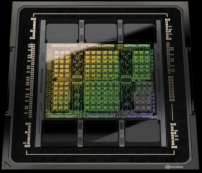As cloud computing continues to revolutionise how businesses operate, Infrastructure as a Service (IaaS) providers are constantly adapting to meet the ever-evolving demands of their clients. One notable trend in recent years is the growing need for specialised computing resources, particularly when choosing between Central Processing Unit (CPU) and Graphics Processing Unit (GPU) solutions. With diverse workloads and industry-specific requirements shaping the landscape, IaaS providers must strike a delicate balance to cater to the unique needs of various sectors.
Moreover, as graphic designers, Visual effects creators, and video editors become more reliant on IaaS platforms for creating captivating visuals, it is essential to understand how GPUs and CPUs perform in such an environment. This post examines how IaaS platforms can help businesses use GPU and CPU resources more efficiently while implementing scalability features and user-friendly performance. Finally, we will provide some helpful suggestions for keeping costs low while maximising the utilisation of your integrated GPU/CPU resource pool.
GPU and CPU architecture: what are the differences and use cases?
CPUs and GPUs are essential components for data processing and command execution. While both are processors tasked with performing computing operations, they differ in their architecture and usage. The CPU is a central processing unit that performs sequential tasks and manages system resources, while the GPU focuses on parallel computing, which is essential for handling complex graphical tasks like video rendering. The GPU architecture is designed to process large amounts of data simultaneously, making it suitable for tasks that require heavy computational power. On the other hand, the CPU is ideal for single-threaded operations that require real-time decision-making capability.
How do they compare in terms of flexibility and cost?
For VFX creators and graphics designers, choosing between CPUs and GPUs becomes particularly important, as their work often demands high-performance computing and powerful graphics capabilities. In this context, it's essential to evaluate the flexibility and cost of these components to determine the most suitable option for their specific needs.
With their architecture optimised for parallel processing and rendering graphics, GPUs can handle large amounts of data, making them ideal for tasks such as complex rendering of 3D scenes, simulating physics, or real-time compositing. Many professional software packages used in the industry, like Autodesk Maya, Adobe After Effects, and Blender, have been designed to take full advantage of GPU acceleration, further enhancing their performance.
CPUs, while versatile and capable of executing a variety of tasks, may struggle to keep up with the demands of high-resolution, computationally-intensive VFX and graphics work. Although some CPU models offer excellent multi-core performance, they typically fall short compared to the raw processing power and parallelism GPUs provide. As such, professionals in this field may find that a CPU-centric approach limits their productivity and slows down their workflow.
When considering cost, investing in a powerful GPU may initially appear more expensive than opting for a high-end CPU. However, for VFX and graphics designers, GPUs' performance benefits often outweigh the additional expense. A robust GPU can save time and resources by streamlining workflows and significantly reducing render times, leading to increased efficiency and a faster return on investment.
Related Content: Sustainability meets Innovation: CUDO Compute unveils democratised Cloud Marketplace
How can IaaS providers adapt to the demand for different types of workloads?
The market for IaaS providers has expanded rapidly in recent years, primarily driven by an evolving demand side and increasing adoption of hybrid solutions across industries. A significant trend has seen companies seeking cloud solutions to replace or supplement their on-premises IT infrastructure. IaaS providers are adapting to meet the demand for different types of workloads. With more businesses relying on machine learning, artificial intelligence, and other compute-intensive processes, providers have focused on offering infrastructure solutions such as CUDO Compute’s marketplace that integrate powerful GPUs and CPUs to meet variable demands. This has allowed businesses to take advantage of cloud-based resources and solve various Enterprise computing problems from enhanced storage to High-Performance Computing (HPC), all while keeping costs low and minimising their IT overhead. As the market for IaaS continues to grow, providers will need to remain flexible to adapt to changing demands, ensuring that their offerings are personalised in line with individual client business needs. By choosing the right infrastructure tailored to your needs, you can unlock unparalleled rendering capabilities, streamline your processes, and elevate the quality of your work. Explore our integrated CPU and GPU solutions and take the first step towards a more efficient and productive future. Contact us today!
About CUDO Compute
CUDO Compute is a fairer cloud computing platform for everyone. It provides access to distributed resources by leveraging underutilised computing globally on idle data centre hardware. It allows users to deploy virtual machines on the world’s first democratised cloud platform, finding the optimal resources in the ideal location at the best price.
CUDO Compute aims to democratise the public cloud by delivering a more sustainable economic, environmental, and societal model for computing by empowering businesses and individuals to monetise unused resources.
Our platform allows organisations and developers to deploy, run and scale based on demands without the constraints of centralised cloud environments. As a result, we realise significant availability, proximity and cost benefits for customers by simplifying their access to a broader pool of high-powered computing and distributed resources at the edge.
Learn more: LinkedIn , Twitter , YouTube , Get in touch .
Subscribe to our Newsletter
Subscribe to the CUDO Compute Newsletter to get the latest product news, updates and insights.

